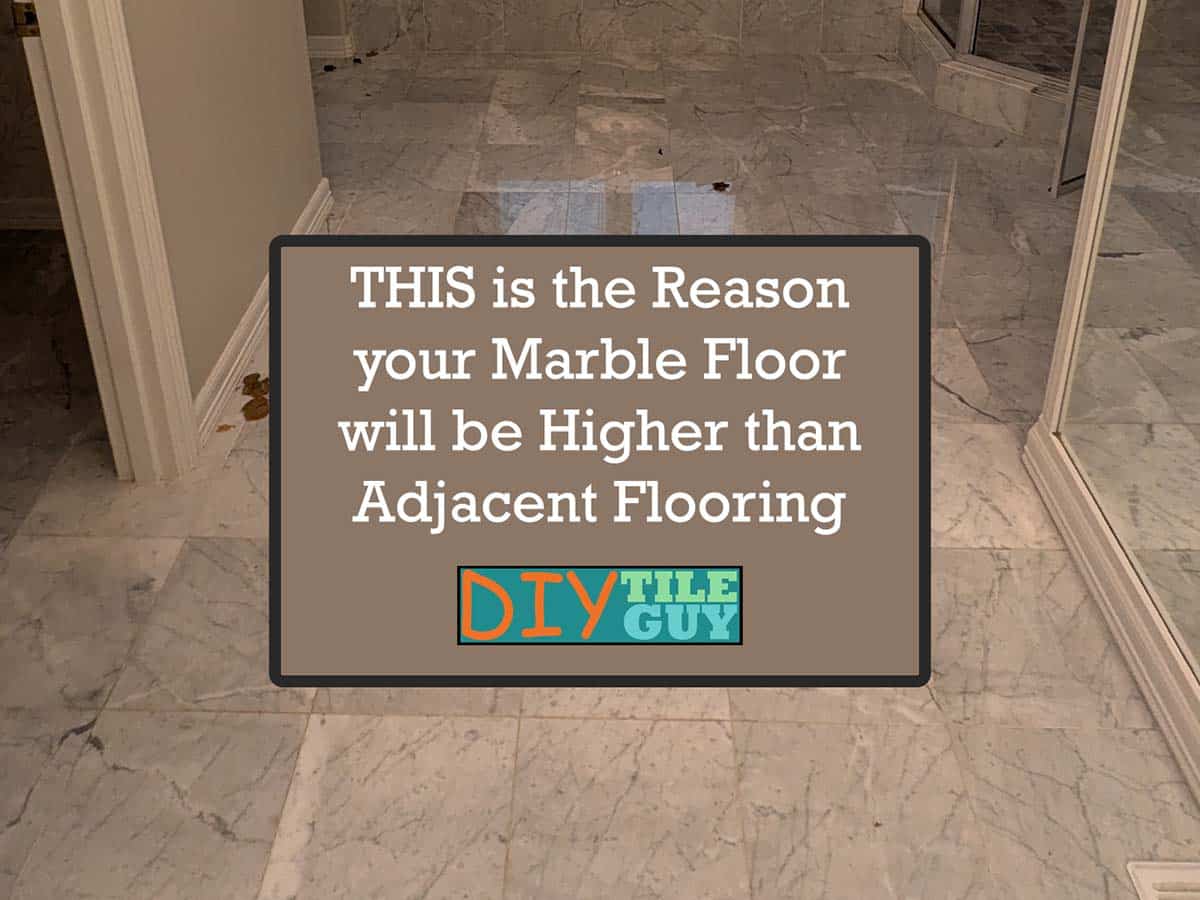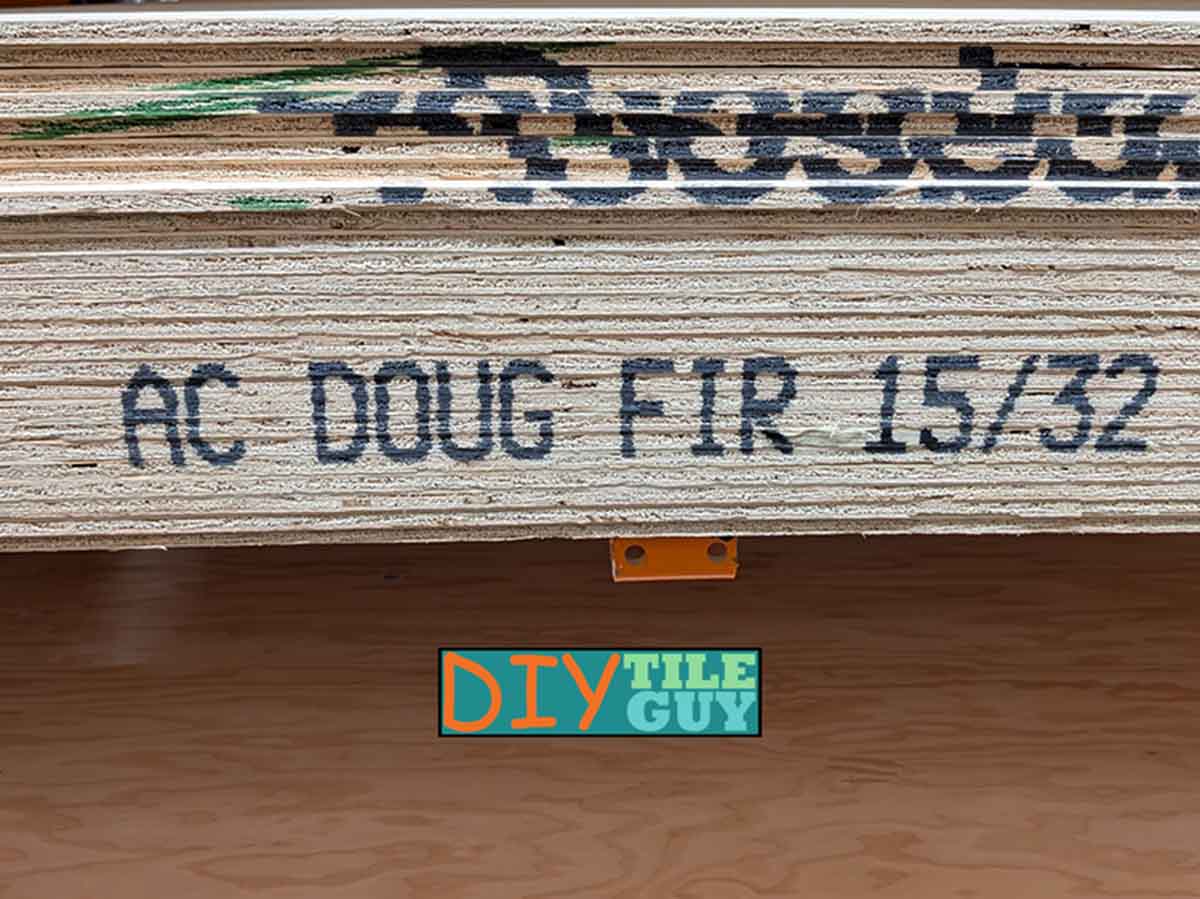Perhaps you have a newly built or recently remodeled home with a beautiful natural stone floor. Suddenly, you start seeing some cracks in the marble flooring.
How can this happen? What could be the cause?
The installers may not have added the additional layer of plywood underlayment required for marble floor tile.
This is a commonly omitted step with natural stone flooring. But it’s a necessary one.
Estimated reading time: 4 minutes

This post refers to specifically wood-framed floor construction. So, if you have natural stone installed over a concrete subfloor, this post doesn’t solve the problem of your marble floor having cracks.
But if your marble floor is over a wood floor with a crawl space or perhaps on the second floor then read on.
Marble floors are commonly installed wrong
It is very common to think that marble floors are installed just like tile flooring.
This is wrong.
Normally, if one were to tile a floor, they would install a tile underlayment—something like Ditra, perhaps a Ditra alternative, cement board, of a self-leveling underlayment.
Then, they would proceed to install the floor tiles.
But this doesn’t work if the tiles installed are natural stone, which may cause the stone floors to crack.
Marble floors need to be stronger
Floors that will receive natural stone need to be engineered stronger than floors that will receive ceramic or porcelain tile.
For starters, the minimum floor structure requirements are higher.
I’m going to mention some numbers that will seem technical. You don’t have to know what they mean. You only need to understand that the higher number means it’s stronger.
Deflection of floor joists
A floor must be structurally sound enough for ceramic tile to meet a deflection requirement of L/360.
Deflection refers to the amount of flexing in the floor joists. Too much flexing can cause cracks in marble floors.
However, natural stone floors are required to be 2X that standard. Yes, L/720 is the minimum as set forth by the Natural Stone Institute.
I have another post that walks you through calculating your floor joist deflection.
Lesser deflection standards
L/720 is a pretty high standard, and not all floors will achieve it. In fact, I’ve heard some questions about how much science is behind this number.
Additionally, some companies that make tile installation products are willing to commit to a lower number for natural stone if their products are used throughout the installation.
One company I know of is Laticrete, which is comfortable with L/480*. [1]
However, stiffening the floor joists isn’t the only way to prevent cracks in marble floors.

Deflection in-between floor joists
Secondly, there’s another requirement that is unique to marble floors. A second layer of plywood.
Yes, to meet industry standards for natural stone installations, you must install another layer of exterior plywood in addition to your minimum 5/8-inch tongue-and-groove plywood.
This second layer of plywood should be:
- C-C grade or better
- 1/2 inch minimum for residential homes
- the face grain needs to be installed perpendicular to the floor joists
- fastened in such a way that the fasteners don’t penetrate the floor joists
- The seams shouldn’t line up with the seams in the floor below
What this layer addresses is how much flexing happens in between the floor joists.
Sure, the floor joists may flex, but the weakest part of the floor is between the joists. This is the area most likely to crack in a marble floor.
Preventing cracks in marble flooring
While stiffer floor joists and an additional layer of plywood will not fix every situation, they will certainly address a common installation error.
At least one product claims to add enough strength to the subfloor that a second layer of plywood isn’t needed.
Obviously, this would need to be investigated further to see if the parties involved are comfortable with the claim.
If you plan on installing a marble shower, make sure to check out my post on why I think you should reconsider.
References
- Laticrete TDS 123 “Deflection”; 02/2020
Leave a Reply